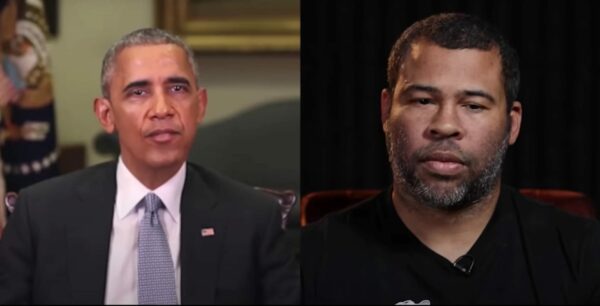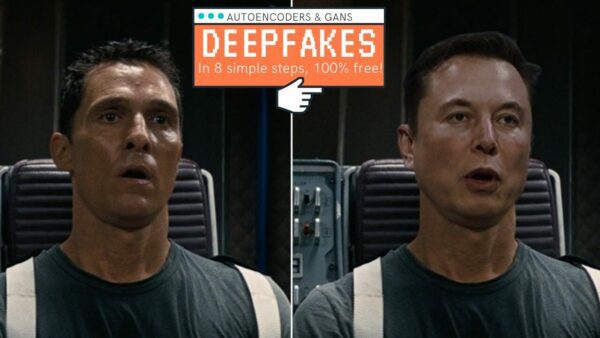Deepfakes can cause significant harm by manipulating public opinion, spreading false information, and damaging the reputation of individuals and organizations. They can also be used for blackmail, political sabotage, and inciting violence. Additionally, deepfakes can lead to privacy violations and cyberbullying as they allow for the creation of fake identities. This technology threatens democracy and societal trust as it becomes increasingly difficult to discern between what is real and what is fabricated.
Table of Contents
What are Deepfakes?

Deepfakes are highly realistic manipulated videos or images created using artificial intelligence and machine learning algorithms. They can make it seem like someone said or did something they never actually did, causing potential harm and confusion.
How Do Deepfakes Work?
Deepfakes, short for “deep learning-based fakes,” are incredibly realistic digital manipulations that use artificial intelligence (AI) to create or alter images, videos, and audio recordings. They have become increasingly prevalent in recent years due to advancements in AI technology, sophisticated tools, and software availability.
Creating a deepfake begins with gathering a large amount of data from a target individual. This can include still images, videos, and audio recordings. The more data available, the more realistic the deepfake will be.
Next, a generative adversarial network (GAN) trains an AI model on the collected data. GANs are two neural networks pitted against each other – one creates fake media while the other tries to detect whether it is accurate or fake. Through this continuous competition, the AI learns how to generate compelling media.
In conclusion, deepfakes are incredibly convincing digital manipulations that use AI technology to generate highly realistic content. Their potential uses range from spreading misinformation and cyberbullying to more sinister activities like impersonation and fraud. As the technology behind deepfakes advances, individuals and institutions must be aware of their existence and take necessary precautions to prevent their negative impact.
How Do People Make Deepfakes?
To make deepfakes, people use advanced artificial intelligence technology and specialized software. They gather many images or videos of the person they want to create a deepfake of.
Then, they feed this data into the software, which analyzes and learns the unique characteristics and movements of the person’s face. Finally, they use this information to manipulate and replace the face in a different video or image with the person they are trying to impersonate.
What Are the Dangers of Deepfakes?

Deepfakes are manipulated videos or images that use advanced technologies, such as artificial intelligence, to create convincing forgeries. There are several dangers associated with deepfakes:
- Spread of misinformation: Deepfakes can spread false information and manipulate public perception.
- Damage to reputation: Individuals or organizations can become victims of deepfakes, harming their reputation.
- Political manipulation: Deepfakes can be used to discredit politicians or influence elections.
- Cybersecurity threats: The creation and dissemination of deepfakes pose cybersecurity risks as they can be used for identity theft or fraud.
- Legal implications: Deepfakes raise legal concerns about privacy, intellectual property rights, and defamation.
- Psychological impact: Watching deepfake videos can psychologically impact individuals, causing confusion and distrust about what is real and fake.
- Impacts on trust in media: As technology improves, it becomes harder to distinguish between real and fake content, leading to erosion of public trust in media sources.
Overall, the rise of deepfakes poses significant challenges for society and requires proactive measures from both technological and ethical perspectives.
How to Spot Deepfakes
- Pay attention to blinking, facial expressions, and lip movements. Deepfakes may have unnatural or inconsistent movements.
- Look for any unusual artifacts in the video, such as blurring or distortion around the face.
- Check for audio and video quality inconsistencies, which may indicate that the footage has been manipulated.
- Compare the video with other sources, such as social media profiles, to verify its authenticity.
- Use fact-checking websites and tools to identify discrepancies or misinformation in the video.
- Be aware of the context and source of the video, as deepfakes are often used to spread false information or manipulate public opinion.
- Trust your instincts and be cautious when consuming videos that seem too good to be factual or controversial.
Frequently Asked Questions About the Harm Deepfakes Cause
What are the dangers of deepfakes?
Deepfakes, or manipulated videos and images created using artificial intelligence, have become a growing concern in today’s digital landscape. They pose a significant threat to individuals, organizations, and society.
One of the most significant dangers of deepfakes is their potential to spread misinformation and facilitate the spread of fake news. They can also be used for malicious purposes such as blackmail or defamation.
Moreover, deepfakes can undermine the credibility of genuine media content and create confusion among the public. As they become increasingly sophisticated, it becomes harder to distinguish between what is real and what is not, leading to potential harm and chaos.
Addressing these dangers through awareness, education, and technological solutions is essential.
What are the disadvantages of deep fakes?
One of the main disadvantages of deep fakes is that they can be used to spread false information or manipulate public opinion. They also raise concerns about privacy and consent, as they can be created without a person’s knowledge or permission. Additionally, deep fakes can potentially damage reputation and trust in the media.
What are the psychological effects of deepfakes?
- Misinformation and Manipulation: One of the critical psychological effects of deepfakes is the potential for misinformation and manipulation. With the advancement of technology, it has become easier to create deepfakes that are indistinguishable from reality. This can lead to individuals being tricked into believing false information, causing confusion, anxiety, and mistrust in society.
- Trust and Authenticity: Deepfakes also significantly impact our perception of trust and authenticity. As we become increasingly aware of the existence of deepfakes, it becomes harder to trust what we see or hear online. It can also damage our perception of credibility as we struggle to determine what is real and fake.
- Emotional Distress: Seeing oneself or loved ones in manipulated videos can cause significant emotional distress. Deepfake videos have the potential to portray someone in a harmful or embarrassing light, leading to feelings of humiliation, anger, and betrayal.
- Privacy Concerns: Another psychological effect of deepfakes is the invasion of privacy. By using someone’s face or voice without their consent, deepfakes can violate an individual’s sense of control over their personal information, leading to feelings of vulnerability and insecurity.
- Impact on Memory: There is evidence that repeated exposure to deepfakes may alter our memory and perception of events. This can lead to confusion about what happened versus what was portrayed in a deepfake video.
In conclusion, the rise of deepfake technology has raised concerns about its psychological effects on individuals and society. The potential for misinformation, manipulation, damage to trust and authenticity, emotional distress, privacy invasion, and impact on memory must be carefully considered when addressing this issue.
What is a deepfake threat?
A deepfake threat refers to using artificial intelligence and advanced video editing techniques to create convincing fake videos or images that can be used for malicious purposes, such as spreading misinformation, impersonating individuals, or manipulating public opinion.
Final Thoughts
In conclusion, deepfakes can potentially cause harm by spreading misinformation, damaging reputations, and undermining trust in the media. It is vital for individuals to be aware of this technology and for measures to be taken to detect and counter its impact on society.
